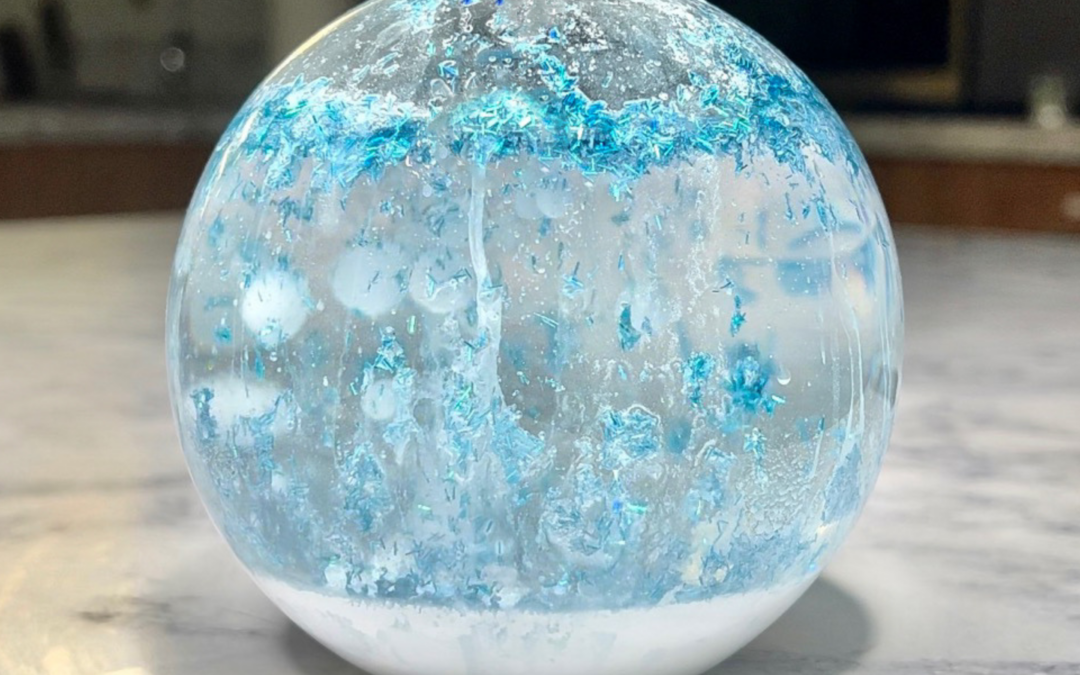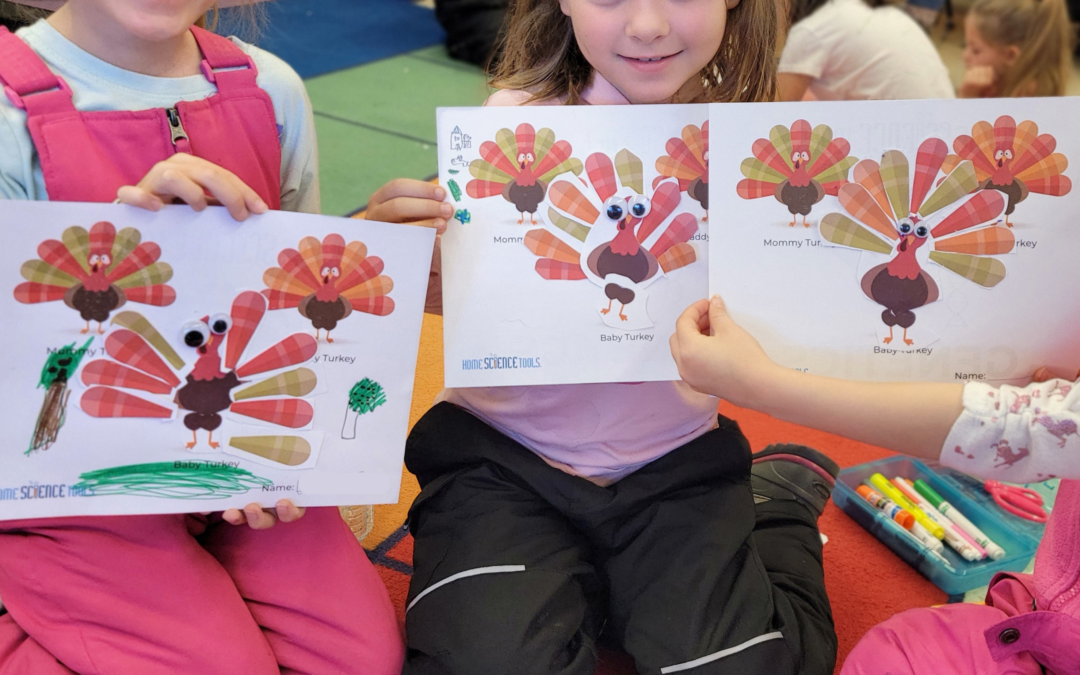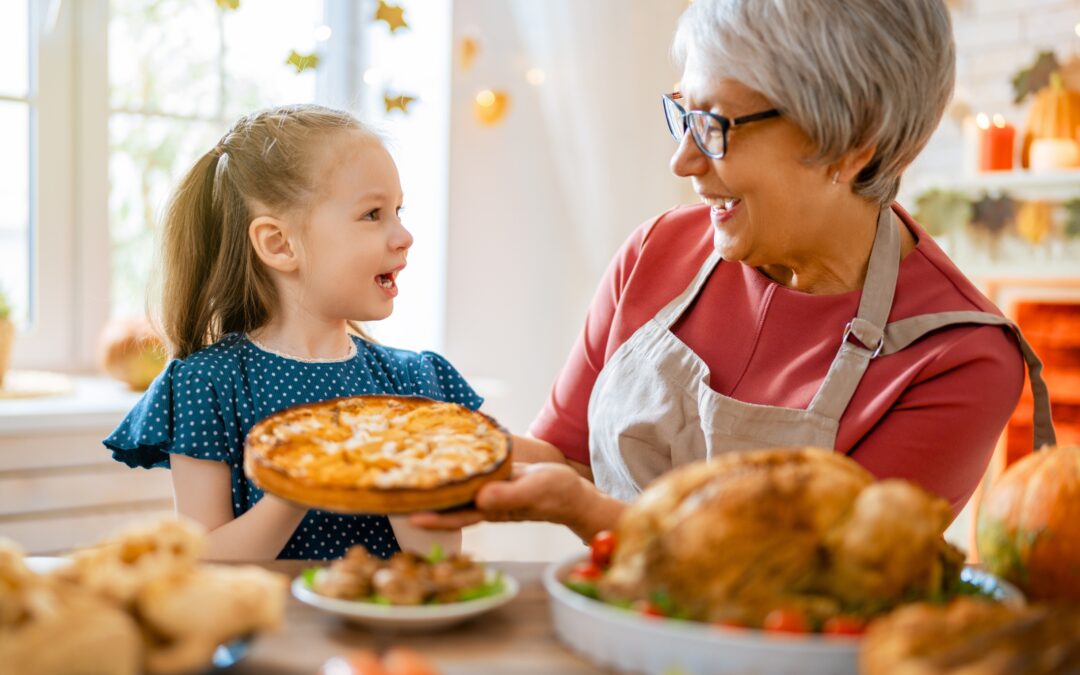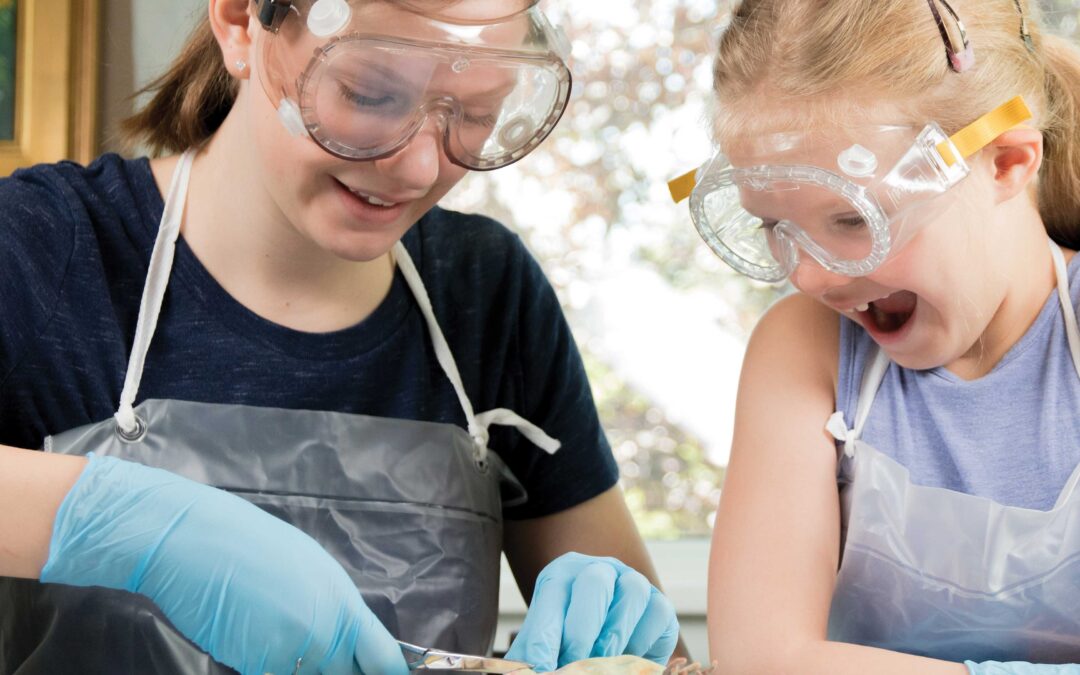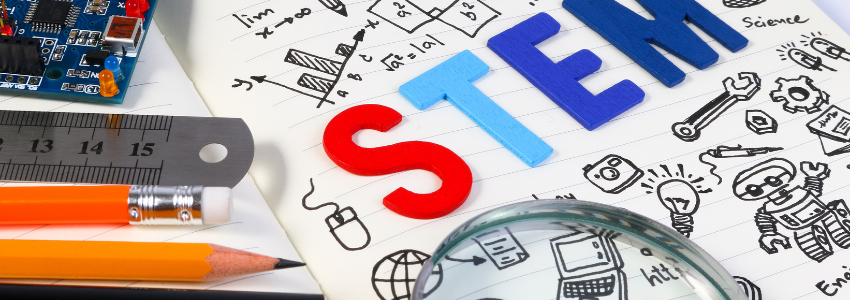Why Does Popcorn Pop?
Popcorn is a marvel. Have you ever wondered how such big fluffy flakes could come out of a hard little popcorn seed? The secret is water. Do this project to learn about the reaction going on inside a popcorn seed.
What You Need:
- Test tube and test tube clamp OR a glass bottle and a saucepan
- Alcohol lamp or stove
- Balloon (small if you’re using a test tube, bigger if you have a bottle)
- Safety goggles or glasses
What You Do:
1. Fill the test tube half-way with water. (This will work faster if the water is already hot.) Stretch a small balloon and blow it up a few times, then stretch it over the mouth of the test tube, pulling it down over the tube an inch or so.
2. Using the test tube clamp, hold the test tube over the alcohol lamp flame. The water will begin to boil. Remove the test tube from the heat when the balloon looks like it might be about to pop. (Or, if you want to get the full effect, carefully tilt the test tube away from you and keep it in the flame. The surrounding area might get a little wet.)
3. Alternate method: Half fill the glass bottle with hot water, cover the mouth with a balloon, then set it inside a saucepan of water and boil over the stove. Try to have the water level in the bottle line up with the water level in the pan.
What Happened:
When the water inside the test tube reached boiling point, it changed into water vapor or steam. The vapor expanded in the heat and tried to escape, exerting pressure on the balloon until it inflated. If you left the water boiling for a few minutes, the pressure got so great inside the balloon that it exploded.
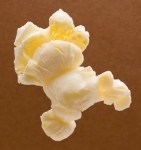 This is what happens to popcorn. Inside each kernel is a little bit of water, making up about 13-15 percent of the whole kernel. As the popcorn heats up, the water inside the kernel changes to steam and exerts great pressure on the outer covering of the seed, called the hull. (Unlike the balloon in our demonstration, the hull doesn’t expand with the air inside it.) The pressure builds until the kernel explodes, shattering the hull and allowing the steam to escape. As it does so, the inner starchy parts of the kernel puff out with air and expand into the fluffy popcorn we like to eat.
This is what happens to popcorn. Inside each kernel is a little bit of water, making up about 13-15 percent of the whole kernel. As the popcorn heats up, the water inside the kernel changes to steam and exerts great pressure on the outer covering of the seed, called the hull. (Unlike the balloon in our demonstration, the hull doesn’t expand with the air inside it.) The pressure builds until the kernel explodes, shattering the hull and allowing the steam to escape. As it does so, the inner starchy parts of the kernel puff out with air and expand into the fluffy popcorn we like to eat.
Check it out: put a single kernel of popcorn in a dry test tube and cover the mouth of the test tube with aluminum foil. Hold the test tube over a flame, shaking it a little bit periodically to keep the kernel from burning. (Keep the test tube pointed away from you!) After a few seconds the kernel will pop, releasing the steam from inside. You’ll see the steam condense on the sides of the test tube. (If your kernel doesn’t pop, it might be because there was not enough water inside. If it doesn’t pop but you see steam condensing on the sides of the test tube, the kernel has a hole in the hull, so the pressure can’t build enough to make it pop.)
More Experimentation
Now that you know what makes popcorn pop, do some experiments to see if altering the kernels will cause them to pop faster or bigger. Since water inside causes them to pop, would they pop better if you soaked the kernels in water first? What if you pre-heated them before trying to pop them? (Don’t let them get over the boiling point, 212 degrees Fahrenheit.) What if you used a needle to poke a hole in the kernels before trying to pop them? Does microwave popcorn pop a higher percentage of kernels than popcorn popped over the stove or in a popper? Predict what you think the result will be with each of these tests and then see if you’re right or not. Can you explain what happens in each test?
Producing popcorn is a precise business. The kernels can’t be cracked or broken and must be dried to contain a very specific amount of moisture. If they contain too little they won’t pop, and if they contain too much the popcorn will be dense and chewy rather light and fluffy.
Cocoa Butter Concoction
In the production of chocolate, the natural fat in cacao beans (called cocoa butter) is removed, leaving cocoa powder behind. The cocoa butter is then added back into the cocoa to create smooth, creamy chocolate. How important is it to add cocoa butter into the chocolate? What effect does it have on the texture and the melting point of the chocolate? Do this project to find out.
What You Need:
- Unsweetened cocoa powder
- Butter
- Unsweetened chocolate chips
- Three bowls
- Wax paper
What You Do:
1. In the first bowl mix some cocoa powder with a little water to make a moist paste. In the second bowl mix cocoa powder with a little melted butter, and in the third bowl melt a few chocolate chips.
2. Observe the texture of each mixture. Which one looks the smoothest? The shiniest? Spread some of the contents of each bowl on a piece of wax paper and wait for them to solidify. Do they harden at the same rate? (You can speed up the hardening process with refrigeration, but check every 5 minutes to observe the difference between them.)
3. Feel each sample – are their textures similar? Try breaking a piece off; how does it break? (If you’re very brave, try a test taste; but you may be surprised at the taste of unsweetened chocolate!)
4. Put a little of the chocolate from the second and third bowl in the palm of your hand. Which one begins to melt first? Do they both melt smoothly and evenly?
What Happened:
Cocoa butter is a necessary ingredient to give chocolate the texture we all love. Unlike other plant-based fats, such as olive oil, cocoa butter is solid at room temperature, but melts quickly at just under body temperature when you put it in your mouth, for instance. Cocoa powder has some cocoa butter in it, but not enough to make it harden like solid chocolate. Butter is an animal fat made from milk that will behave differently from cocoa butter. You will notice that its texture is very different from the melted chocolate chips, which are made with cocoa butter. If you can access regular cocoa butter (perhaps at a health food store), try this project again adding melted cocoa butter to cocoa powder instead of using chocolate chips.
Different kinds of chocolate will have different melting points, depending on what ingredients are in them. Try another project comparing the melting point of dark chocolate, milk chocolate, and white chocolate.
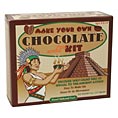 Have fun with more food science projects & hands-on kits:
Have fun with more food science projects & hands-on kits:
- Make Your Own Chocolate Kit
- Chemistry of Food Experiment Kit
- Hot Chocolate Solvent Science Project
- Homemade Ice Cream in a Bag Science Projects
All About Chocolate
The history of chocolate extends back over a thousand years to the ancient Mayan culture. The Maya, and later the Aztecs, took the seeds from the pod-like fruit of the cacao tree and ground them to make a bitter, frothy chocolate drink flavored with various spices like vanilla or chili pepper. This drink was highly prized; at one time cacao beans were even used as money in the Aztec economy! In the 1500s, Spanish explorers brought cacao back home and introduced it to Europe where, when sweetened with sugar, it became a very popular drink for the next several hundred years.
In 1828 a Dutch chocolate maker named Conrad van Houten paved the way for the modern chocolate bar when he invented a hydraulic press that squeezed cocoa butter out of ground cocoa beans. This produced powdered “cocoa” that was easier to mix up into drinks. But that wasn’t all — shortly afterward it was discovered that the extra cocoa butter derived from the press could be added to unpressed chocolate (along with ingredients like milk and sugar) to create a creamy, solid form of chocolate.
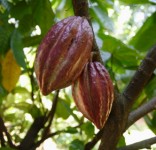 Making chocolate is a complex process. It starts in the equatorial rainforest, where the cacao tree grows up to 30 feet high, shaded by 150-foot-tall rainforest trees. The trees produce pods filled with a white pulp and seeds, which we know as cocoa beans. These pods are harvested by hand and opened with machetes to extract the beans, which are then fermented under a blanket of banana leaves. Fermentation removes the rest of the pulp from the beans and alters the flavor. The beans are then spread in the sun to dry for several days.
Making chocolate is a complex process. It starts in the equatorial rainforest, where the cacao tree grows up to 30 feet high, shaded by 150-foot-tall rainforest trees. The trees produce pods filled with a white pulp and seeds, which we know as cocoa beans. These pods are harvested by hand and opened with machetes to extract the beans, which are then fermented under a blanket of banana leaves. Fermentation removes the rest of the pulp from the beans and alters the flavor. The beans are then spread in the sun to dry for several days.
When the dried beans arrive at a chocolate factory they are roasted to just the right flavor. During roasting, the inside of the bean shrinks away from the hull; during the next step, winnowing, the hull is cracked and blown away leaving just the inner part, called the nib. Now the nibs are ground into a chocolate paste which will either have the cocoa butter pressed out of it to make cocoa powder, or will have cocoa butter and other ingredients added to it to make chocolate. The chocolate mixture is passed through many different refining machines to knead it into a smooth texture, then put into molds. As it solidifies, it contracts slightly, pulling away from the sides of the mold, making it easy to remove, wrap, ship, and sell!
There are many different kinds of chocolate. Dark chocolate has the most cocoa in it and little to no milk, whereas milk chocolate, as its name implies, includes milk and less cocoa. White chocolate isn’t really chocolate at all! It contains cocoa butter, but no cocoa. Unsweetened, bittersweet, and semi-sweet chocolate are all forms of dark chocolate with different amounts of sugar added. Unsweetened has no sugar added and is usually used in baking where the recipe also calls for sugar.
Many people claim that chocolate is addictive or that it has chemicals that make them feel happier when they eat it. Some even say that eating dark chocolate can be good for you because of the antioxidants it contains. Chocolate is a very complex food with hundreds of different chemicals in it – scientists are still studying it to see what effects it has on the body. They suspect that it is not truly chemically addictive, but that it does contain traces of mood-altering substances. Addictive or not, it sure tastes good!
Fabulous Facts
Cocoa Chapstick. Cocoa butter is a popular ingredient in many lotions and lip balms because it forms a protective barrier that traps moisture, keeping the skin from drying out.
Chocolate Poison. Chocolate contains a chemical called theobromine that dogs and cats cannot process. If they eat chocolate they will get very sick and may even die.
Just One Pop. There are six different types of corn, but only one variety pops.
Science Links
Satisfy the holiday sweet tooth with these tasty (and scientific!) candy recipes from the Exploratorium’s Science of Cooking.


